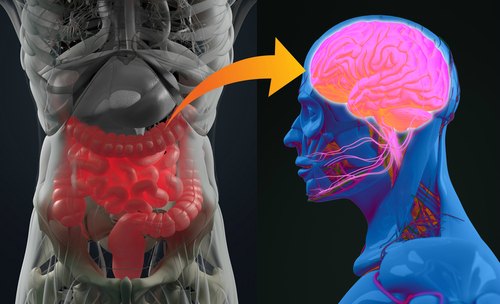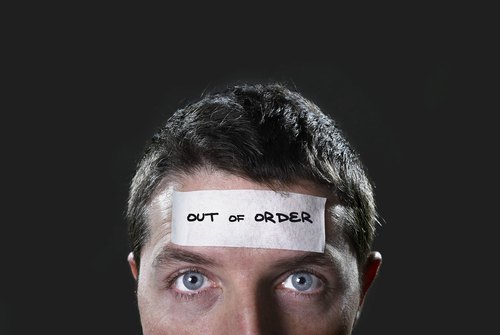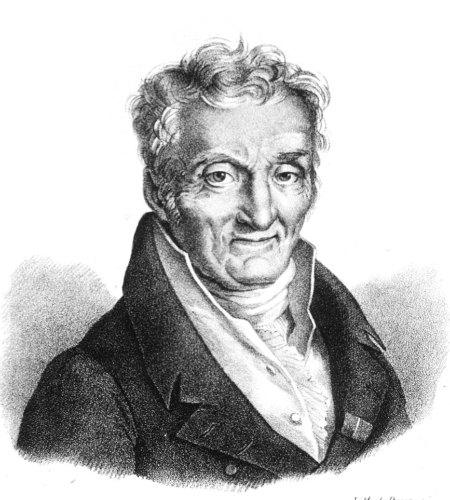Introduction
In this part I want to explore another case study, the Sandy Hook elementary school shooter Adam Lanza, and to get a perspective of Modern Psychiatry from one of its esteem colleagues Dr Allen Francis.
Case Study: Adam Lanza

On December 14 2012 ,20 year old Adam Lanza shot and killed 20 children aged between 6-7 years of age and shot and killed 6 adult staff members having fatally shot his mother prior to going to Sandy Hook Elementary school. An entry in Wikipedia states:
The Report of the Office of the Child Advocate concluded:
“There was not one thing that was necessarily the tipping point driving Lanza to commit the Sandy Hook shooting. Rather there was a cascade of events, many self-imposed, that included: loss of school; absence of work; disruption of the relationship with his one friend; virtually no personal contact with family; virtually total and increasing isolation; fear of losing his home and of a change in his relationship with Mrs. Lanza, his only caretaker and connection; worsening OCD; depression and anxiety; profound and possibly worsening anorexia; and an increasing obsession with mass murder occurring in the total absence of any engagement with the outside world. Adam increasingly lived in an alternate universe in which ruminations about mass shootings were his central preoccupation”.
The authors also noted that despite multiple developmental and mental health problems, Lanza had not received adequate mental health treatment. They wrote:
“It is fair to surmise that, had Lanza’s mental illness been adequately treated in the last years of his life, one predisposing factor to the tragedy of Sandy Hook might have been mitigated”
Adam Lanza receives his first solid diagnosis:
‘Sensory Integration Disorder’ at age 5 or 6

The last paragraph is an interesting evaluation so let us explore a little deeper. An excellent article written by Andrew Solomon of the New Yorker publication who interviewed Adam’s Father Peter Lanza describing Adam as he developed into a young adult. His father and the rest of the world familiar with this tragedy are still looking for a motive. Adam, born in 1992 did not speak until he was three and even at this time he showed signs of Hypersensitivity to physical touch,even tags had to be removed from his clothing. At school at the beginning of 6th grade he sensed imaginary smells and washed his hands excessively. He was diagnosed with Sensory Integration Disorder and during this time in kindergarten and first grade (I assume he was 5 or 6 yrs old) he had speech and occupational therapy..and teachers were told to watch for Seizures. Adam struggled with basic emotions. The state’s attorney reported that when Adam was in fifth grade (he was I assume 10 years old) he had low esteem and believed everyone in the world deserved more than he did.
‘The Big Book of Granny’
written by Adam when he was 10 yrs old
That same year (2002) he and another boy wrote a book called ‘The big book of granny’ where an old woman with a gun in her cane kills, and again the State’s attorney describes Adam as “Intelligent but not normal, with anti-social issues”. By all accounts Adam had a sharp sense of humor, but he seldom showed much emotion, while his sensory disorder continued to plague him to the point where his mother xeroxed his textbooks in monochrome because he could not bear colours. He developed what was described as a ‘stiff lumbering gait’ which is not unlike a Parkinsonian walk or Zombie like walk.
Adam Lanza receives his second solid diagnosis
‘Asperger’s Syndrome’ at age 13

He avoided eye contact and began having panic attacks, anxiety, unable to concentrate, unable to sleep, and stress. When Adam was 13, his parents took him to a psychiatrist who diagnosed Asperger’s syndrome (Autism). The parents were relieved, since now, they had a definite diagnosis but Adam refused to accept the diagnosis. Adam’s Father even went to a non profit organization known as GRASP (Global and Reginal Asperger Syndrome Partnership) meeting and imagined that Adam would marry somebody with the same Aspergers condition, even considering moving to another school where ‘special needs’ pupils were well catered for. The psychiatrist recommended home schooling which the parents undertook.
Adam Lanza receives his third (symptomatic) diagnosis
‘Obsessive Compulsive Disorder‘ at age 14

Another psychiatrist commented that he had classic symptoms of Obsessive Compulsive Disorder where Adam refused to touch metal objects (doorknobs), or even his mother to touch them in fear of contamination. Then he was prescribed a psychotropic drug Lexapro which he took for 3 days and the morning of the third day he became dizzy, his speech was disjointed and coordination skills were affected (unable to open his cereal box), and excessive sweating. His mother said that he became vegetative, sitting in a dark room, so he refused to take any more drugs (I believe he was 14 at this point). They even tried therapy for one hour/week, but Adam refused. His mother comments on his ‘escalating misery’ when he turned 16 on one occasion crying in the bathroom for 45 minutes.
Analysis and Comments
I totally agree with the authors of the report of the Office of the Child Advocate’s comment ….Lanza had not received adequate mental health treatment. This tragic, heartbreaking series of events were obviously not caused by psychotropic drugs (since Adam refused taking his prescription of Lexapro after 3 days) but by a catastrophic failure of the current system of medical psychiatry. This unforgivable stubbornness to forget the wisdom of great psychiatrists that have left invaluable legacies, including PHILIPPE PINEL who wrote 200 years ago
‘THE PRIMARY SEAT OF INSANITY GENERALLY IS IN THE REGION OF THE STOMACH AND INTESTINES.’

In 1979 when it was discovered morphine-like substances in partly digested gluten proteins (called Gliadorphins ) only reinforced the finding of Dr Curtis Dohan (1935-1992) an American pathologist and physician who dedicated his career researching the association of Schizophrenia./Celiac disease with diet. This discovery showed that they interfered with the immune system, blood vessel dilation and:
ALTERING CHEMICAL ACTIVITY IN THE BRAIN CONTRIBUTING TO PSYCHIATRIC AND BRAIN ILLNESSES INCLUDING LEARNING AND ATTENTION DISORDER, MAJOR DEPRESSION, SLEEP DISORDERS, POSTPARTUM PSYCHOSIS AND AUTISM.
Let us now look at the warning signs:

At the age of 6 Adam showed signs of:
- Hypersensitivity
- Sensed imaginary smells
- Washed his hands excessively.
- Diagnosed with his first solid diagnosis Sensory Integration Disorder
- His teachers were told to watch for Seizures
At the age of 10 he develops
- A ‘stiff lumbering gait’ which is not unlike a Parkinsonian walk or Zombie like walk.
At the age of 13 people around him notice:
- Avoids eye contact
- Panic attacks,
- Anxiety,
- Unable to concentrate,
- Unable to sleep,
- Stress.
- Diagnosed with his second solid diagnosis ‘Asperger’s syndrome’
At the age of 14
- Diagnosed with his third (symptomatic) diagnosis ‘Obsessive Compulsive Disorder‘

This poor unfortunate kid was hurting and crying out for help but nobody was listening, even the professionals could not hear his cries. His mother finally heard his crying in the bathroom but could do nothing. The first signs of imaginary smells and excessive washing when he was 5 are classic signs of obsessive-compulsion which is a ‘neighbor’ of Autism. The stiff lumbering gait he developed is a sign of interference with Dopamine transmitters in the brain as researchers have found with Parkinson patients. The diagnosis of Asperger’s syndrome is also a close ‘neighbor’ of Autism. Adam’s gut was dysbiotic..he was a GAPS child that could have been fixed within 1-2 years on a GAPS diet.
Unfortunately nobody told the parents who were trying their utmost to get their son well, but lacked the correct knowledge to fix his dilemma and his mother and 20 children and 6 staff members of the Sandy Hook school and Adam himself paid the ultimate price. As far as GRASP (Global and Reginal Asperger Syndrome Partnership) goes, they offer among things group therapy which may offer some solace, but even their website states : ‘Causes of Asperger’s syndrome are still being determined’, so I would want seek a cure not consult with people who are not aware of what causes it.
The Myth of Mental Illness

In his book ‘The myth of madness’ the late great Thomas S. Szasz, M.D who died in 2012 at 92 wrote,
‘Strictly speaking disease or illness can affect only the body, so there is no such thing as Mental illness; it is a metaphor’.
The fact that mental illness is regarded in the same way as a bodily illness is synonymous as regarding a TV to be defective because the program showing is bad. He goes on to say that although mental illness may have been useful concept in the 19th century, today it is scientifically worthless and socially harmful.
Anti-Psychiatry

Psychiatrist Allen Francis dubbed the ‘most powerful man in psychiatry’ in 1994 by the New York Times when he was department head of Psychiatry at Duke University School of Medicine and chair of the DSM-IV task force (You may remember from previous articles that the DSM is the diagnostic ‘Bible’ for Psychiatrists) wrote a blog entitled ‘Psychiatry and Anti-Psychiatry 2016. He writes that the psychiatry profession was once ‘Biopsychosocial’ meaning that psychiatrists back in the day would conduct face to face therapy sessions in an attempt to extract exactly what was troubling their patients. These sessions would last for hours or 1 hour/week for a number of weeks, and result might have been supportive, suggestions on how they can overcome their problems, practice yoga or some type of relaxing therapy, suggest how they can channel their negative thoughts, or listen to soothing music, or anything without the use of a drug, or maybe in some exceptional cases they suggest a relaxant or a mild sedative.
The Realities of Treatment

Now due to drastic funding cuts in the mental health services psychiatrists spend their time discussing symptoms, adjusting the drugs prescribed and determining side effects. Most psychiatrists do a good job in diagnosis, prescribing medicine and support, but Francis admits some are incompetent, however, on the whole, psychiatric treatment is good, and most patients get well as a result. Some, a minority don’t improve, and some become worse. A lot depends on the ‘relational chemistry’ between psychiatrist and patient.
A time and a place to Medicate
and
A time and a place for Biopsychosocial Treatment

Dr Francis claims that treatment failure is due in part to primary care doctors who prescribe 90% of Benzodiazepines, 80% of anti-depressants, 60% of Stimulants and 50% of anti-psychotics, although he does not deny that a few psychiatrists do over medicate their patients, and lastly, misleading drug company marketing. He goes on to espouse that despite the complaint that psychiatrists over medicate, some psychiatrists believe that the Biopsychosocial treatment is the solution for severe cases when clearly there is a need to medicate for example to treat conditions such as schizophrenia and bipolar disorder. Dr Francis is also concerned that his criticism of psychiatry has meet little disagreement from psychiatrists, while defending psychiatry suggesting that treatment is valuable for some but not others has been meet with angry responses that state psychiatric treatment is harmful for everybody.
Put Psychiatric Treatment
into Perspective

While the a majority who have been satisfied with their treatment stay silent, the dissatisfied claim that psychiatry makes people worse since their own experiences typically involved excessive medication for too long and maybe for a wrong diagnosis. He states that meds are not all good or all bad, and can be harmful if prescribed to patients that did not need them, but may be essential for someone who does.
Coercion
Dr Francis cites the example of coercion which existed when insane asylums were popular, but now coercion is worse now because of the criminalization of mental illness and those that are afflicted have traded their incarceration in an insane asylum for prison. So an improved mental care with appropriate housing would protect people from coercion not promote it.
We are only trying to Help
Despite the picture painted by dissatisfied patients that psychiatrists are power hungry bullies trying to control their lives and plying them with poison, psychiatrists feel helpless in an underfunded, disorganized mental health (non) system trying to improve people’s quality of life.
I thank you Dr Francis for the courtesy of my summarizing your great article and from the tone of your article I can see why you were considered the most powerful man in Psychiatry in 1994
Final Words
I was intending to add my voice to Philip Hickey from the website Mad in America who also commented on your article but I won’t because your article is sincere and I only wish that all psychiatrists possessed your credibility and honesty. My only comment is that mental disorders originate biologically, as the great Philippe Pinel suggested some 200 years ago, and by fixing the origin of the disorder is the only way to heal patients with mental conditions. Using modern psychotropic drugs is only ‘papering over the cracks’ but to heal the (Dr Pinel’s words) ‘seat of insanity’, the gut, will we ever be able to resolve the anguish in these unfortunate people.
- It is an art of no little importance to administer medicines properly: but, it is an art of much greater and more difficult acquisition to know when to suspend or altogether to omit them.
- …the treatment of insanity without considering the differentiating characteristics of the patients has been at times superfluous, rarely useful, and often harmful.
- I cannot but give enthusiastic witness to their moral qualities. Never, except in romances, have I seen spouses more worthy to be cherished, more tender father’s, passionate lovers, purer or more magnanimous patriots, than I have seen in hospitals for the insane, in their intervals of reasonableness and calm; a man of sensibility may go there any day and take pleasure in scenes of compassion and tenderness.
- In all public asylums as well as in prisons and hospitals, the surest, and, perhaps, the only method of securing health, good order, and good manners, is to carry into decided and habitual execution the natural law of bodily labour, so contributive and essential to human happiness.
Quotes from Philippe Pinel

(20 April 1745, Saint-André, Tarn; France – 25 October 1826, Paris, France) (aged 81)
References/Acknowledgments:
- Dangerous grains:why gluten cereal grains maybe hazardous to your health James Braly, Ron Hoggan Book 2002
- Gut and Psychology Syndrome Dr Natasha Campbell Mcbride Book 2010
- Philippe Pinel – The Father of Modern Psychiatry quotes Sergey Markov 2017 Genius Revive
- Adam Lanza Wikipedia
- The Reckoning : The father of the Sandy Hook killer searches for answers Andrew Solomon The New Yorker March 2014 Annals of Psychology
- GRASP (Global & Regional Asperger’s Syndrome) website
- The myth of madness Thomas Szasz MD Book 1974
- Psychiatry and Anti-Psychiatry Allen Francis The Blog 2016
- Allen Francis on Anti-Psychiatry Philip Hickey 2016 Mad in America
About The Author: Eric Malouin
In terms of my heritage I am not a thoroughbred, I am half English from England and half French Canadian from Quebec. Having spent the last 10 years in Medical research I thought that it was time to share my passion for true health to anybody interested in maintaining health without using conventional medicine. Once in the distant past I lived off conventional grocery shelves until you visit the man in the white coat and then a light shines through the darkness that you had not realized you were in… I was in..the twilight zone….I cured my own problems using natural methods, although they were not a big deal since I have always exercised..jogging every morning and tennis 12 hours/week, swimming but I was eating a lot of devil food that was causing my body to become unbalanced..an easy fix..reprogrammed my taste buds and gave the food back to the devil…lol
I hope you enjoy the articles……
Regards,
Eric
Contact the Author: emalouin@gmail.com